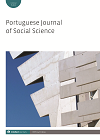
Full text loading...

This article reviews Portugal’s path in addressing non-normative gender identities, focusing particularly on legal gender recognition. While recognition is not limited to enshrining rights in the law – especially the right to the acknowledgement of (self)identity by the state – the legal step is one that is clearly fundamental to making overall recognition a reality. Portugal is an interesting case study, having shifted in less than a decade – the second of the twenty-first century – from a complete absence of trans issues in legislation to the passage of a law on gender identity based on self-determination. Using analysis of legislation and interviews of trans people and representatives of the LGBTQI+ movement conducted during two research projects spanning the last fifteen years, we analyse the macro-level transformations and how they are reflected, at the micro-level, in the trans people’s inclusion in or exclusion from legal recognition, and in the extension of this basic condition of citizenship.

Article metrics loading...

Full text loading...
References


Publication Date:
https://doi.org/10.1386/pjss_00039_1 Published content will be available immediately after check-out or when it is released in case of a pre-order. Please make sure to be logged in to see all available purchase options.